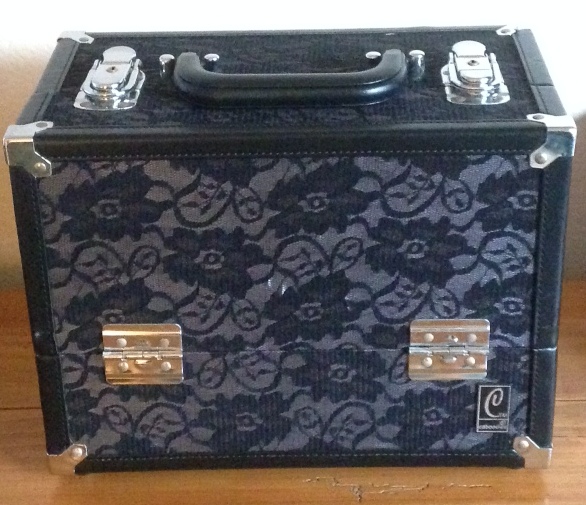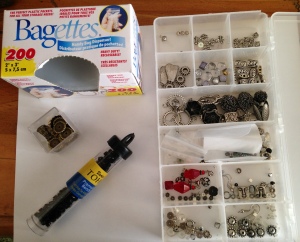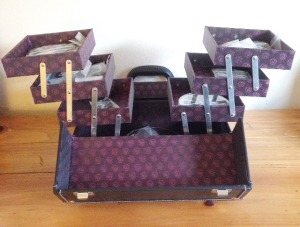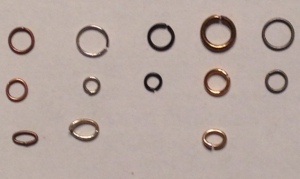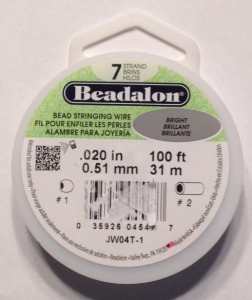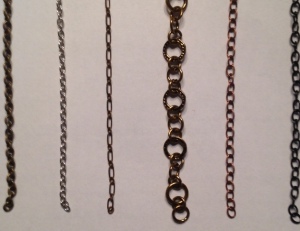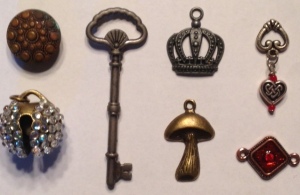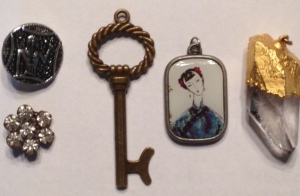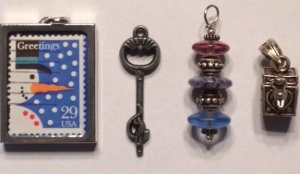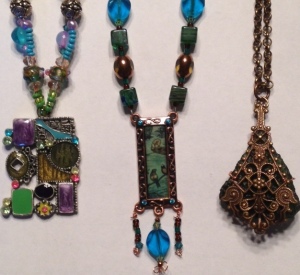No, I am not going on vacation. And yes, that is a Caboodle case. But I don’t use it for make-up. I use it to store my jewelry making components. You probably thought I went on vacation since it took me so long to get this post added.
So this is Materials, Part Two. Again, it will mostly be pictures. There may be some terms that I refer to that you don’t understand but I promise that I will cover them in the coming posts.
Some of these items you may never need and some of them are critical.
The first things that you will need is storage units. You can spread your components all over your work area if you want but this can get messy and disorganized. I prefer to be on the more orderly side but believe me, even with these tools, I still end up searching for specific pieces. This picture has several examples of storage ideas.
As you can see, the majority of the beads are in a compartmentalized plastic case with lid. I use these units to divide up my silver, gold and copper components. Things such as spacer beads, eye pins, unusual beads, bead caps, etc. When I have a lot of a particular type of bead, I like to use bagettes; small, sealable plastic bags. When you purchase seed beads, E-beads, etc., they usually come in a tube or small plastic box with lid; both of which are pictured.
When you are fully engaged in bead collecting, then using a Caboodle is great. It opens up to several compartments. I store my beads in their separate bagettes in these cases by color; red, blue, green, etc.
When you become addicted, you might want to invest in several Caboodles.
When you have completely gone over the edge, antique buffets and vintage storage furniture to house your collection will become a necessity. But let’s not rush. All in good time…
Not that we have covered the storage aspect, let’s talk about some components.
These are jump rings. They come in a variety of sizes, colors and shapes. I like to use them and will show you how/where as we get into building our first projects together.
This is beading wire with a thin coat of plastic on it. There are a multitude of products to choose from; this is my primary choice for stringing beads. Some folks like to use elastic cord. I made a couple of bracelets and when the elastic broke down and the bracelets fell apart is when I decided that I wouldn’t use it anymore. But that doesn’t mean that you shouldn’t try it. Some people also like beading thread, memory wire and leather cording. It all depends on what you want to create.
These are crimp tubes. As you can see, they also come in a variety of colors. More on their use with stringing wire in later posts.
Yes, these are chains. Chains seem to be in these days. I like to mix chains and beads together. The one advantage to using chains is that you can use less beads and extend or shorten the necklace as need be. I will expound on that later. One thing to note, however, is make sure that you feel the chain before buying. I don’t like scratchy things on the back of my neck at all. I touch the surface so that I know that it is a smooth, comfortable finish to lay upon my neck.
Last but not least: Charms and pendants. Fun, decorative stuff to add to your necklace or bracelets. On the left of the pictures are vintage buttons. I have seen these added to necklaces. I have used them in my crafts too. I will get to those eventually.
Here are some more. As you can see, I like keys. You can even make your own pendant from stacking beads (third from left).
These are just examples of pendants that I have incorporated into necklaces. The one on the right is a crystal that I wrapped with wire and a metal component and hung on a chain. Awesome, right???
Next post: My favorite: Beads!!!
